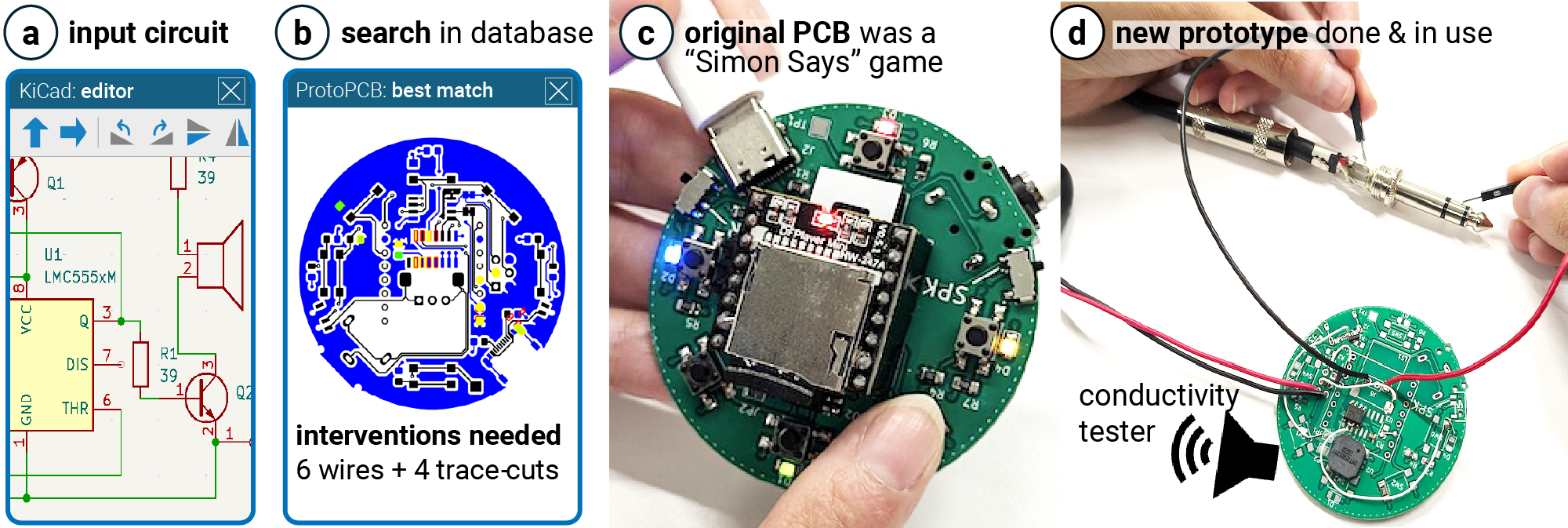ProtoPCB: Reclaiming Printed Circuit Board E-waste as Prototyping Material
Team: Jasmine Lu, Pedro Lopes
PCBs often easily become e-waste because they are designed for a specific circuit. To extend the utility of PCBs, we introduce a computational approach to enable reusing PCBs as prototyping material to implement new circuits. Our tool takes a user’s desired circuit schematic and analyzes its components and connections to find methods of creating the user’s circuit on discarded PCBs (e.g., e-waste, old prototypes). We believe our tool offers: (1) a new approach to prototyping with electronics beyond the limitations of breadboards and (2) a new approach to reducing e-waste during electronics prototyping.
This paper was presented at CHI2025.

Paper Abstract.
We propose an interactive tool that enables reusing printed circuit boards (PCB) as prototyping materials to implement new circuits — this extends the utility of PCBs rather than discards them as e-waste. To enable this, our tool takes a user’s desired circuit schematic and analyzes its components and connections to find methods of creating the user’s circuit on discarded PCBs (e.g., e-waste, old prototypes). In our technical evaluation, we utilized our tool across a diverse set of PCBs and input circuits to characterize how often circuits could be implemented on a different board, implemented with minor interventions (trace-cutting or bodge-wiring), or implemented on a combination of multiple boards — demonstrating how our tool assists with exhaustive matching tasks that a user would not likely perform manually. We believe our tool offers: (1) a new approach to prototyping with electronics beyond the limitations of breadboards and (2) a new approach to reducing e-waste during electronics prototyping.



